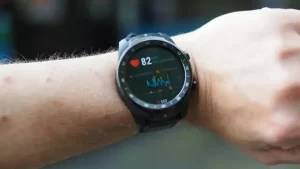Frequent hypotension during dialysis may indicate peripheral vascular disease
- Warning: Smartwatch Blood Sugar Measurement Deemed Dangerous
- Mifepristone: A Safe and Effective Abortion Option Amidst Controversy
- Asbestos Detected in Buildings Damaged in Ukraine: Analyzed by Japanese Company
- New Ocrevus Subcutaneous Injection Therapy Shows Promising Results in Multiple Sclerosis Treatmen
- Dutch Man Infected with COVID-19 for 613 Days Dies: Accumulating Over 50 Virus Mutations
- Engineered Soybeans with Pig Protein: A Promising Alternative or Pandora’s Dish?
Frequent hypotension during dialysis may indicate peripheral vascular disease!
Frequent hypotension during dialysis may indicate peripheral vascular disease! American Journal of Kidney Disease Research. A study published in the American Journal of Kidney Disease found that frequent episodes of dialysis hypotension indicate a high risk of peripheral arterial disease.

Peripheral Arterial Disease (PAD) is a disease characterized by progressive atherosclerotic stenosis or occlusion, especially in lower extremity arteries.
Peripheral artery disease is often not effectively diagnosed in patients with renal failure, who may not have the traditional claudication symptoms.
Dialysis hypotension is defined as dialysis internal systolic blood pressure <90 mmHg. A sudden decrease in blood pressure may reduce limb perfusion, leading to more peripheral arterial disease events or aggravating peripheral arterial disease symptoms.
Researchers used the national hemodialysis patient register and the electronic health record of a large dialysis provider to find that frequent dialysis hypotension is associated with a high incidence of peripheral arterial disease.
Among the 45591 patients, those with a higher frequency of dialysis hypotension had a higher prevalence of cardiovascular disease. In 61,725 person-years of follow-up, 7886 patients had new peripheral artery disease.
These results indicate that patients with more frequent dialysis and hypotension need to pay attention to screening for peripheral arterial disease.
Dialysis
sources from wikipedia:
“In medicine, dialysis (from Greek διάλυσις, dialysis, “dissolution”; from διά, dia, “through”, and λύσις, lysis, “loosening or splitting”) is the process of removing excess water, solutes, and toxins from the blood in people whose kidneys can no longer perform these functions naturally. This is referred to as renal replacement therapy. The first successful dialysis was performed in 1943.”



